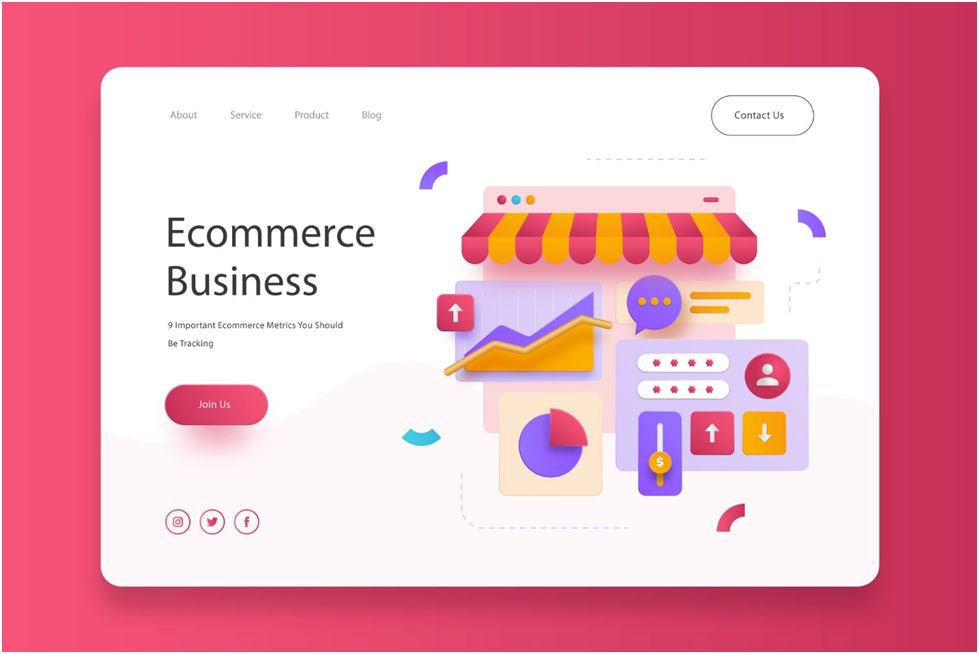If you own an ecommerce business, it’s crucial you keep track of metrics. They will help you get a better understanding of your shop and make informed decisions. Selling things online isn’t an easy task but if you track the right metrics, you might just make the whole thing smoother and faster.
When you learn how to sell online, you also learn how to deal with a lot of data. Analytics, ads, social media engagements, email blasts – you name it! It’s important to get a better understanding of what exactly you should track, so you won’t feel overwhelmed by all the data. This is exactly what this article is about – we’ll give you a few useful hints about the metrics that actually matter to an online store.
Table of Contents
1. Average Order Value (AOV)

The Average Order Value (AOV) measures how much money customers usually spend on a single order from your shop. The AOV is calculated by dividing the total revenue for a given period by the total number of orders made in that time. For example, if you make $200,000 in revenue in one day and that revenue was given by 100 orders, then your AOV is 200,000/100, which means $2000 per order.
2. Email Opt-in Rate
Even with the rise of social media, email marketing continues to thrive, being one of the most important tools for marketers. When using email marketing, the goal is to get as many people as possible on your mailing list, even if they don’t really buy your products right away.
People who sign up to your email newsletter usually care enough about your brand to want to receive updates and important notices. And if they care, there’s a high chance they’ll become paying customers in the future.
3. Shopping Cart Abandonment Rate

It’s always disheartening to see a potential customer load up a shopping cart before leaving the process unfinished. This is a crucial metric to track, and you should definitely pay attention to it, as it could possibly lead to discovering bigger problems with your website.
A few reasons why your customers might be abandoning their carts are:
- You don’t offer a guest checkout option;
- You made the checkout process needlessly long;
- You weren’t transparent about additional fees or high shipping costs;
- You didn’t properly structure the user experience.
4. Sales Conversion Rate

The sales conversion rate is the percentage of people who actually make a purchase after visiting your website. You can calculate the conversion rate by dividing the number of sales to the number of users and multiplying by 100%.
For example, if you’ve had 1000 visitors today but only 10 of them made an actual purchase, that would leave you with a sales conversion rate of 1%. Obviously, you want this number to be as high as possible and there are a few tricks you can pull out of your sleeve:
- Make sure the loading times are fast (no more than 2 seconds);
- Optimize your keywords;
- Use high-quality images and videos of your products;
- Add customer reviews for each product (when possible).
5. Bounce Rate
The bounce rate is the percentage of people who leave the website (or bounce) after only visiting one page. Sadly, for ecommerce, the average bounce rate is around 45.7% and it makes sense if you think about it – some people might just be browsing. However, if you notice an unusually high bounce rate with your website, this might be the sign of some deeper issues going on with your user experience.
6. Customer Lifetime Value

Customer Lifetime Value is the amount of revenue a single customer earns you throughout their lifetime. This helps you get a better understanding of how much a customer is actually worth to you in the long run. We’ll use another example here: you have two customers, one that only shops once and makes a $200 purchase and one that makes ten $100 purchases over the course of a few months. It’s obvious which one is the most valuable.
7. Customer Engagement
Customer engagement is yet another important metric you should track. You can usually measure these interactions by looking at reactions, shares or subscriptions. The more active your customers are, the more likely they are to actually spend money on your products. You will want to pay close attention to things such as:
- How much time people spend on your store’s pages;
- Shares across social media channels;
- Which areas of your website are clicked on the most;
- Newsletter sign-ups.
8. Customer Retention Rate

If you’re losing clients as fast as you acquire them, something is wrong with either your products or your overall marketing campaign. Repeat customers are vital to your survival (and success) as an ecommerce business, as it will cost you less to keep the old ones loyal than to get new ones.
To calculate the Customer Retention Rate (CRR), you will have to subtract the number of new customers gained during a specific period of time from the number of customers at the end of that period. Take this result and divide it by the number of clients you had at the beginning of this period and then multiply it by 100.
9. Device Type

If you want to offer your customers an excellent experience, you need to find out what devices they use to access your store. You can use Google Analytics to get access to this information and you should track it because it helps tweak your UX to each device type.
You should track this metric if you want your customers’ experience to be smooth and streamlined, no matter the device they use. This will also help you maintain consistency amongst the different versions of your website, as well as test how different devices perform.
Final Thoughts
While these might seem like a lot of numbers to keep track of, they’re all crucial in the development of your ecommerce business. And if you want your shop to thrive, you will need to pay attention to each and every one of them. Ultimately, these will help you make informed decisions for the success of your ecommerce business.
Chris Mcdonald has been the lead news writer at complete connection. His passion for helping people in all aspects of online marketing flows through in the expert industry coverage he provides. Chris is also an author of tech blog Area19delegate. He likes spending his time with family, studying martial arts and plucking fat bass guitar strings.